
A Taste of Italy – Post 6: Light and Shadow in Magnificent Churches, Old and New Mix on the Streets
The incredible thing about Rome is that you can just stumble into beautiful places without warning. So here was just another church on another street in Rome . . . . However, I was so greedily taking photographs of this beautiful church that I didn’t note its name.
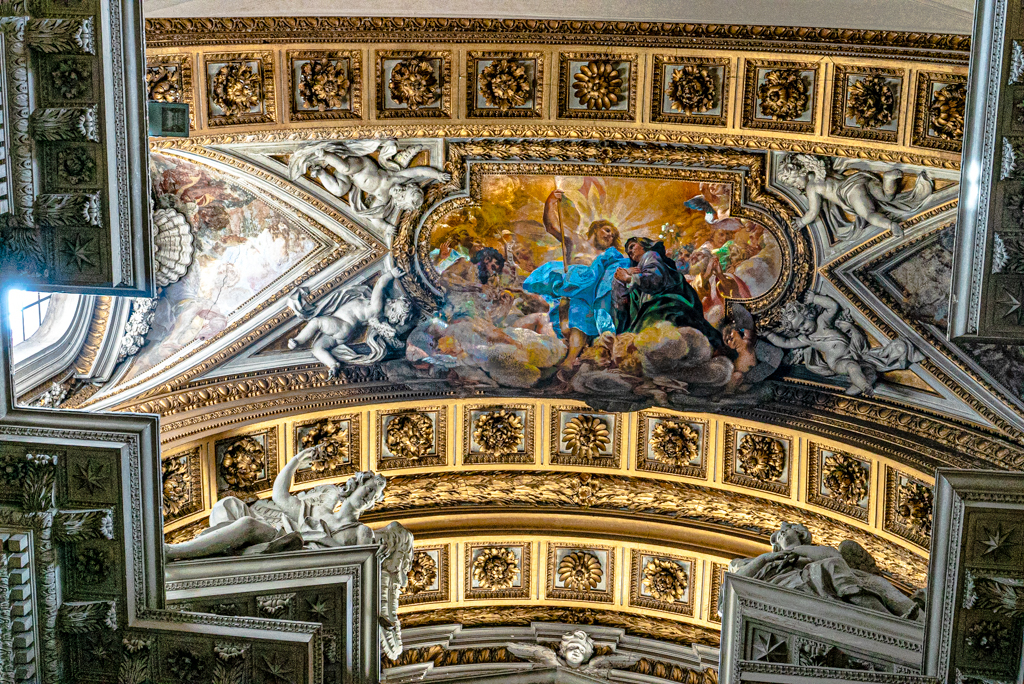
I did note, though, how skilled church designers were in using the symbolism of dark and light. The only daylight came from high windows near the ceiling. The rest of the church was dimly lit.

Down in the shadows of the church, light was selectively used. It might light a statue

or illuminate one work of art imaginatively framed.
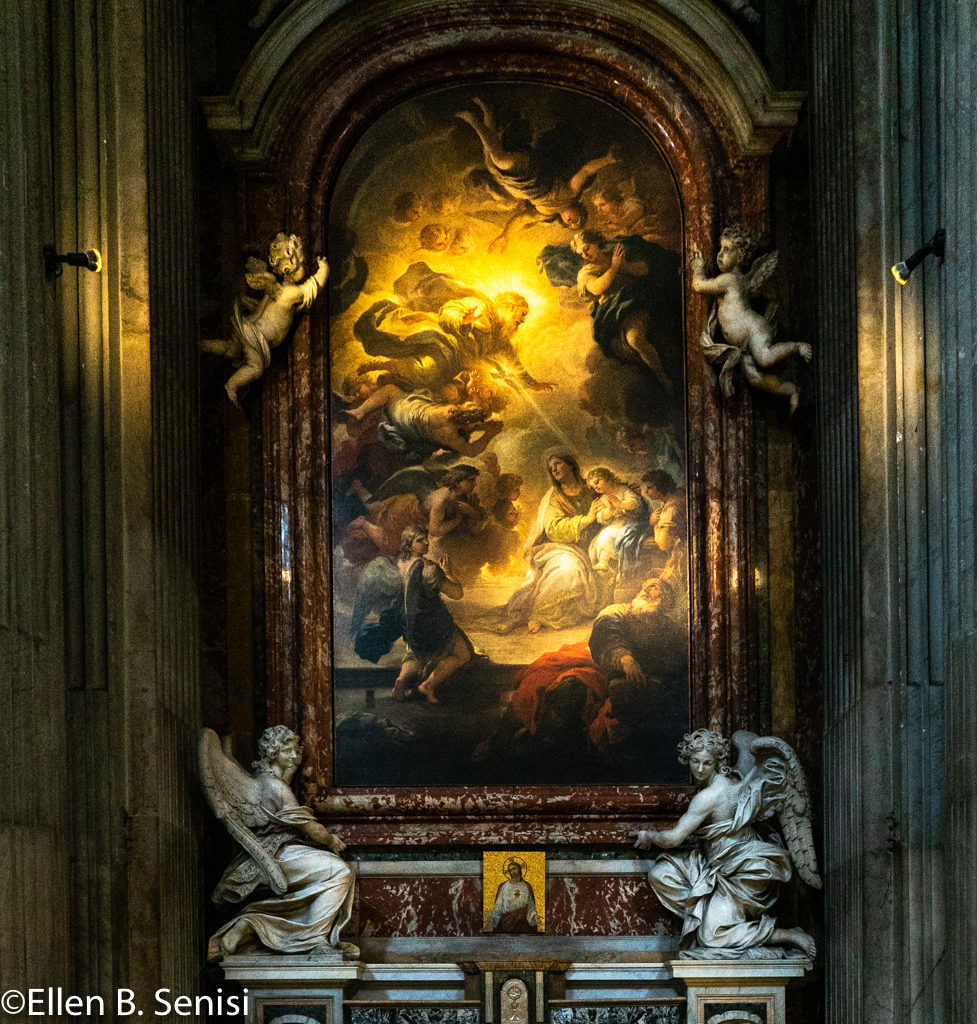
Small candles had been lit in memory of loved ones. They made little points of light in the shadows.
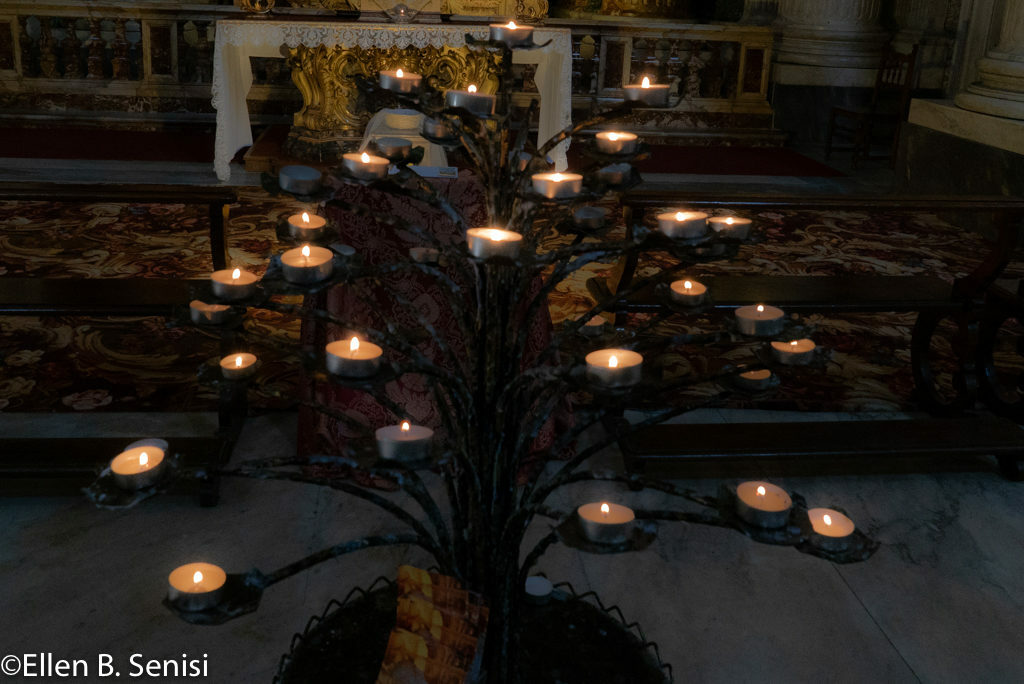
There was a grand organ. I imagined the way its sound would fill this magnificent building.

There were intricate, lovely paintings in recessed domes of the grand ceiling.

We exited the church into bright daylight. We walked on main streets for a bit and were often surprised by little archeological pockets of ancient ruins tucked between modern buildings – another reminder of the city’s age.
Notice someone’s small terrace at the upper right. Sitting on the steps with a cup of coffee looking into these ruins would be a Roman thing to do.

There is a reverence for historical structures in the countries we visited on this trip that vastly surpasses the respect shown for historical structures in the US. Even buildings that were not as magnificent as these churches were well taken care of. People were living in, working in, and renovating buildings that were centuries old.
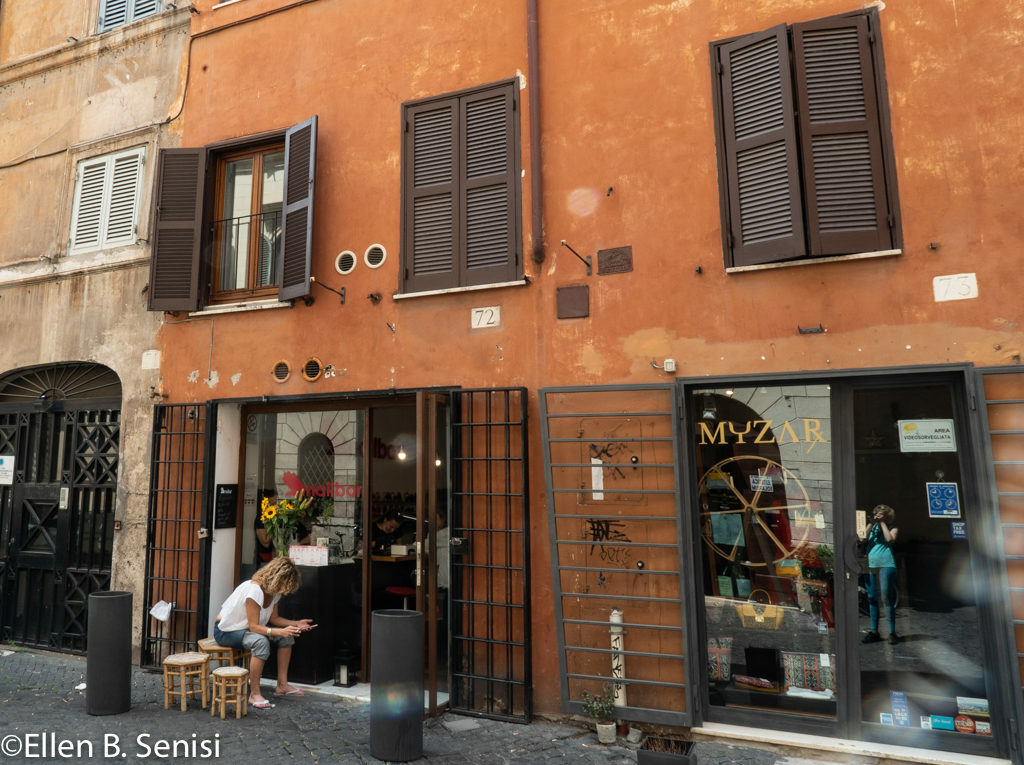
We were now in the Campo d’Fiori area, which was lively as the churches were hushed.
You want pasta?
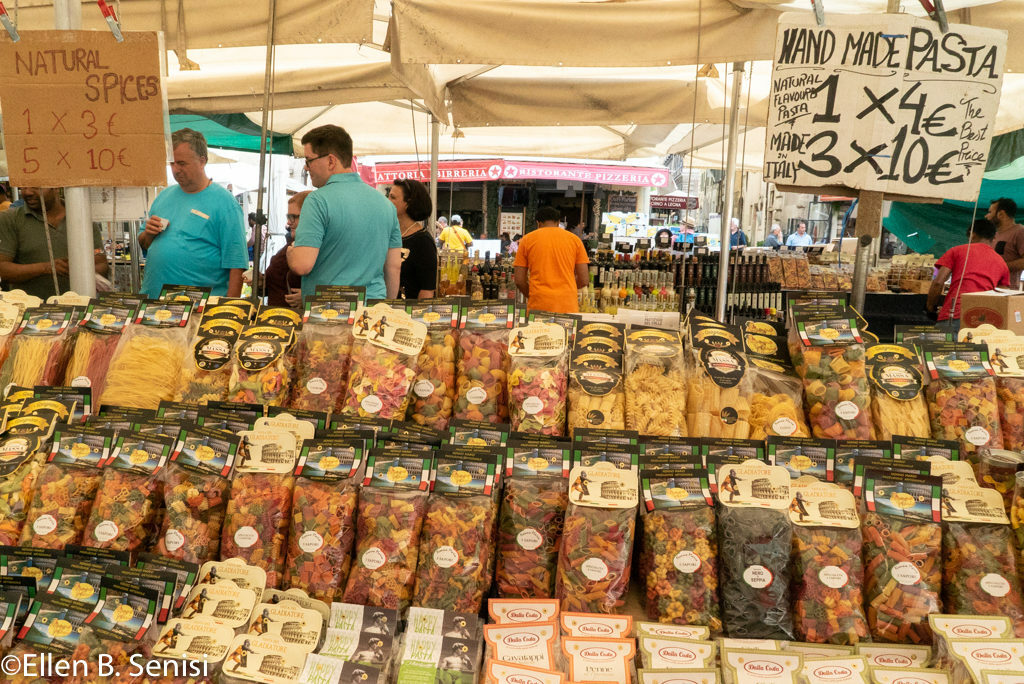
We left the noise of the square for another church and were stunned by its beauty, as well. These are not even the famous ones and they are breathtakingly beautiful.
It had a majestic vaulted ceiling.
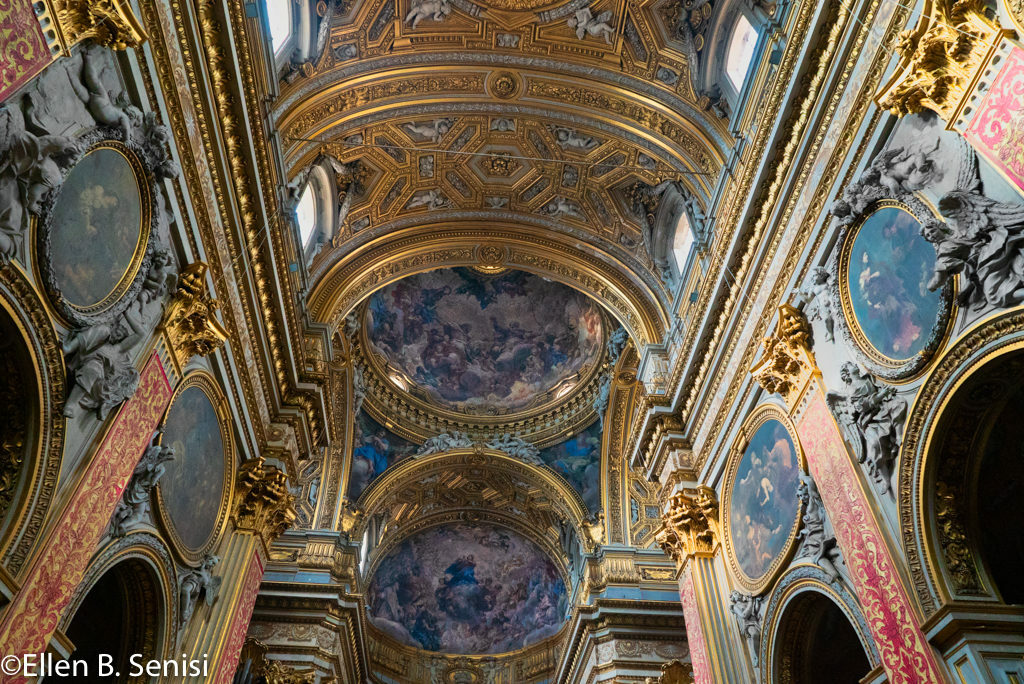
I saw, again, the symbolism of dark and light. While most of the church was in deep shadow, focused beams of light streamed from high windows.
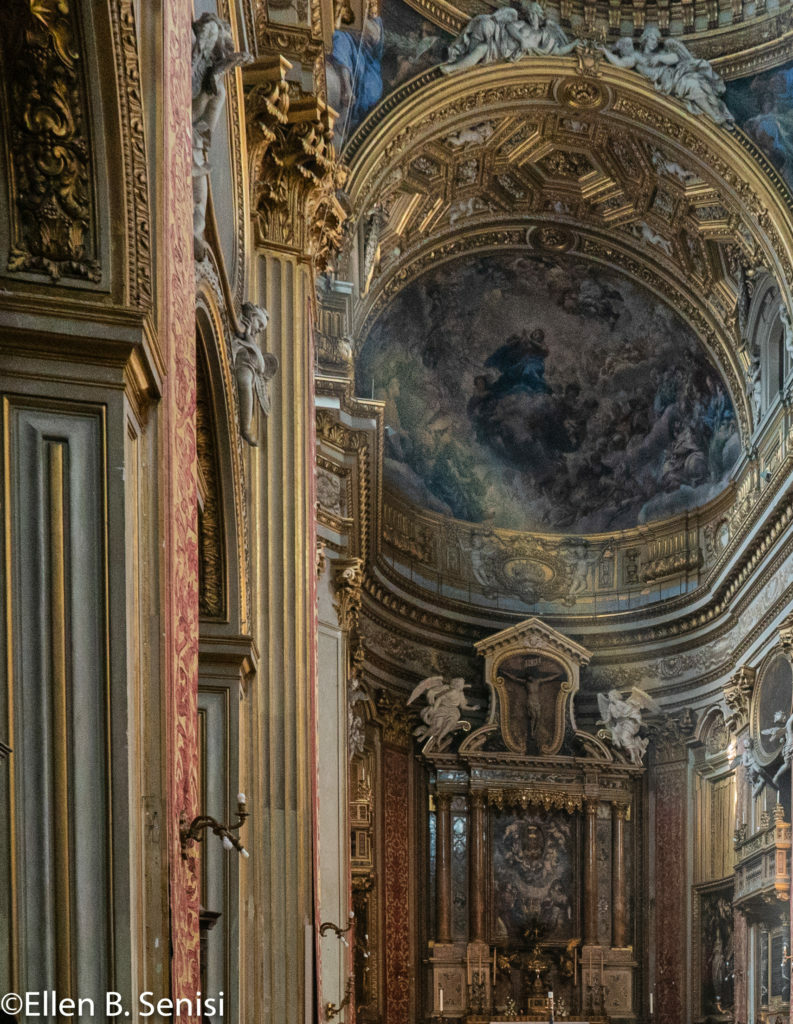
Every surface in this church was rich with a riot of detail.
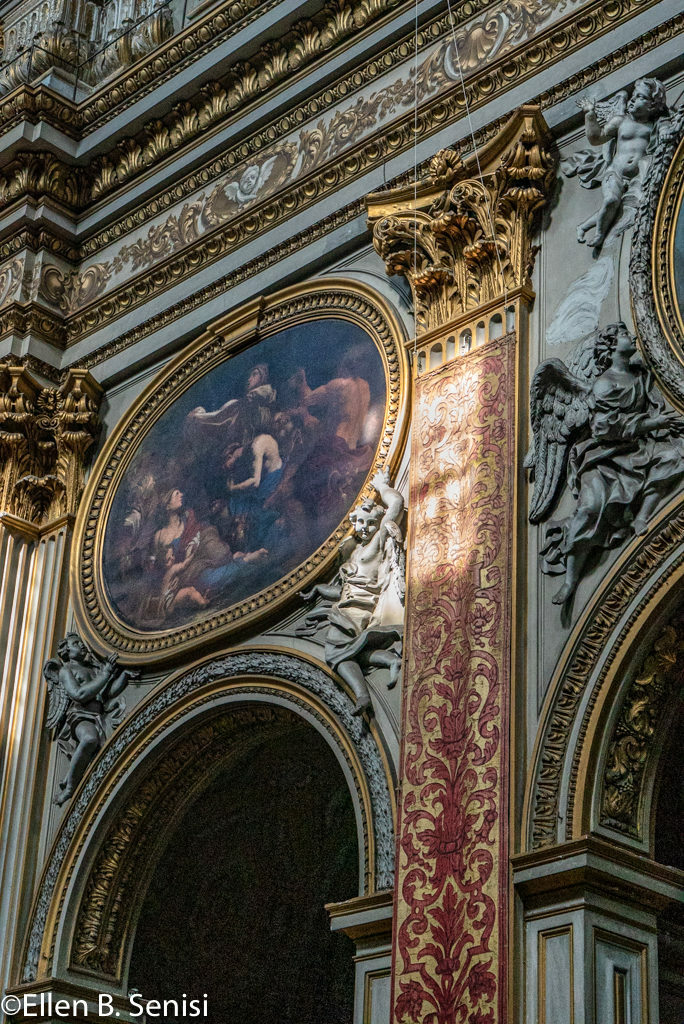
Imagine being one of the artists on a scaffold painting this!
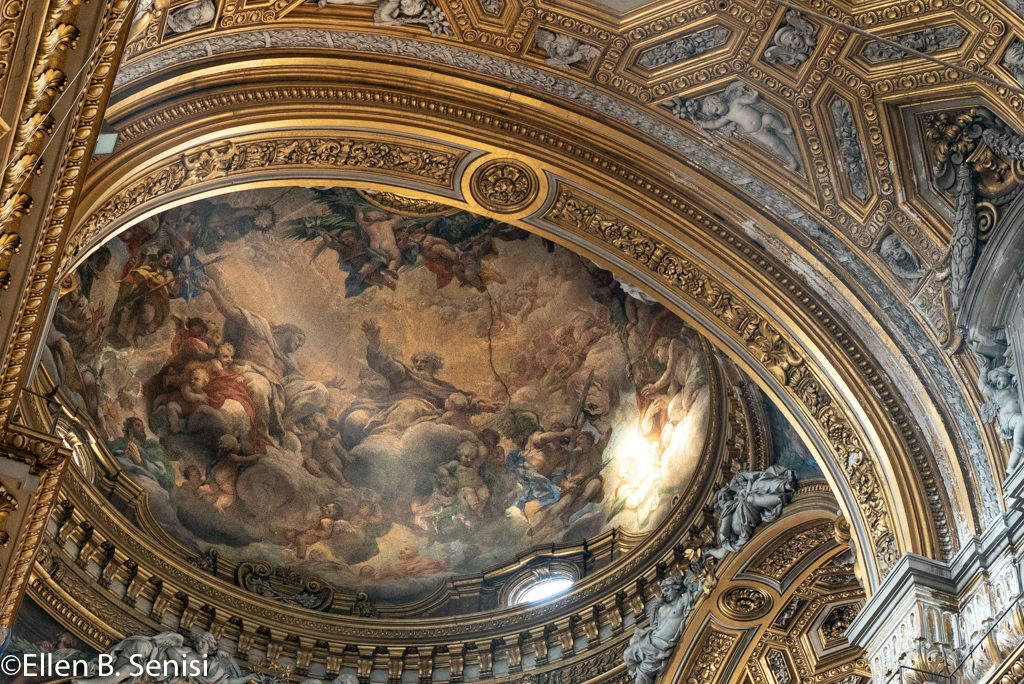
It is sobering to recall the tithes and indulgences wrung from the population, including dirt-poor peasants without enough food, that were required to build the grand churches. I say this not to take away the beauty of what we look at now but to remember those on whose backs this beauty was built.
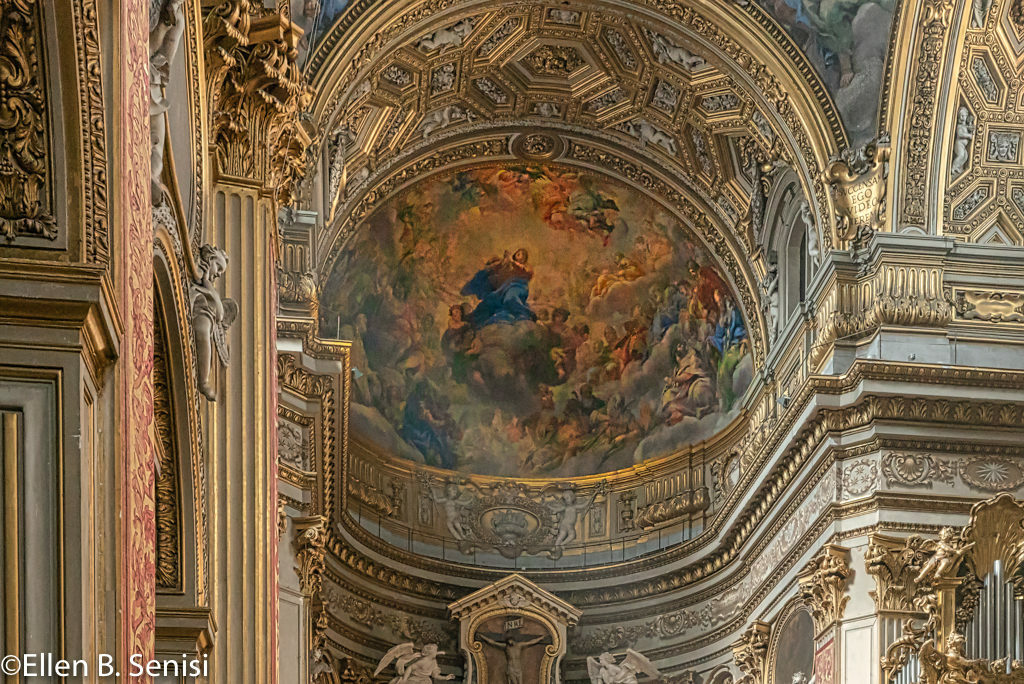
p.s. Below is a comment on this post from a close friend. As a writer/photographer tuned in to beauty and creativity, I found her remarks spot on and worth adding here.
Those photos are beautiful. I am stunned by the artistry in, as you say, some local church on some random street in Rome. Where has our sense of beauty and creativity gone? Maybe because life was so harsh back then, people created these works of art to elevate their their souls from the meanness of their own physical existence. What does current architecture say about us, then? I know as Americans, we generally discard anything that is “old” (as in,more than 100 years old—hah!) and favor cold, abstract, utilitarian structures. Maybe because our gods are no longer magnificent ethereal beings to be adored and exalted.
Another p.s.; this post elicited some very thoughtful comments from friends and family!
I think one of the things they were going for with these grand churches was the creation of a state of mind for those within their walls. It’s good that we have places like this.
